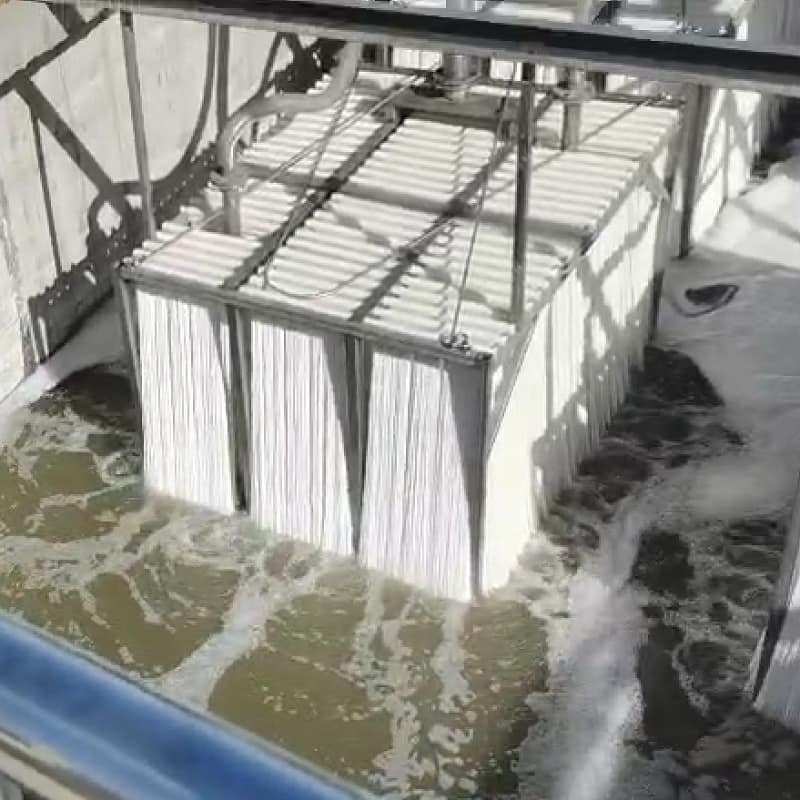TOD vs TOC vs COD vs BOD: What They Mean and How to Use Them in Wastewater Treatment
TOD, TOC, COD, and BOD are the four pillars of organic pollution assessment. They sound similar, but each tells a different story about what’s in the water and how your treatment process should respond. This guide explains the differences, how they’re measured, how they relate, and where each shines in real-world operations.
Quick Definitions
- TOD (Total Oxygen Demand): Theoretical oxygen required to oxidize all oxidizable substances (organics + some reduced inorganics) under complete combustion. Measured by high-temperature combustion with oxygen monitoring.
- TOC (Total Organic Carbon): The amount of carbon bound in organic compounds. Determined by oxidizing organics to CO₂ and reading CO₂ by NDIR; separates total carbon (TC) and inorganic carbon (IC).
- COD (Chemical Oxygen Demand): Oxygen equivalent consumed when organics (and certain inorganics) are chemically oxidized—commonly via dichromate digestion; robust and widely regulated.
- BOD (Biochemical Oxygen Demand): Oxygen used by microorganisms to degrade biodegradable organics, typically measured over 5 days at 20 °C (BOD5).
Rule of thumb: By “completeness of oxidation,” TOD ≥ COD ≥ BOD. TOC is not an oxygen demand—it’s a carbon mass measure—but often correlates with COD/BOD depending on the wastewater type.
How Each Parameter Is Measured
TOD
Water is combusted at high temperature (≈900 °C) in an oxygen stream; consumed oxygen is quantified by the analyzer. Fast and comprehensive, but requires specialized instrumentation.
TOC
Two common approaches:
- High-temperature catalytic oxidation: Acidify to remove IC, then oxidize organics to CO₂ at ≈680 °C; NDIR quantifies CO₂.
- UV–persulfate oxidation: UV plus strong oxidant for low-level waters and online monitoring.
COD
Dichromate method (CODCr): Reflux with K2Cr2O7 in strong acid with Ag+ catalyst; quantify reduced dichromate via titration or colorimetry. A permanganate variant (CODMn) exists for cleaner waters but has lower oxidizing power.
BOD
BOD5 (20 °C, dark): Dilute, add nutrients/seed, incubate 5 days, measure DO depletion. Alternatives (e.g., respirometric methods) can accelerate but still mirror biological oxidation.
For regulatory and design work, many utilities rely on paired COD and BOD tracking: COD gives rapid trends; BOD confirms biodegradability.
How TOD, TOC, COD, and BOD Relate
- Oxidation hierarchy: TOD ≥ COD ≥ BOD because TOD counts everything oxidizable, COD counts most organics plus some reduced inorganics, and BOD reflects the biodegradable fraction only.
- TOC to oxygen demand: If all carbon oxidizes to CO₂, 1 g C theoretically needs about 2.67 g O₂. Real-world TOC↔COD/BOD ratios vary (≈1.5–3.0) with wastewater composition.
- BOD/COD ratio: A quick biodegradability screen:
- > 0.3 → good for biological treatment.
- < 0.2 → consider pre-oxidation, adsorption, or source control.
Typical Ranges (Indicative)
| Water Type | COD (mg/L) | BOD5 (mg/L) | TOC (mg/L) | TOD (mg/L) |
|---|---|---|---|---|
| Clean surface water | 10–30 | 1–5 | 1–5 | 15–40 |
| Municipal wastewater | 250–600 | 100–300 | 80–200 | 300–700 |
| Food & beverage effluent | 1,000–5,000 | 600–2,500 | 300–1,200 | 1,200–5,500 |
| Petrochemical effluent | 500–5,000 | 50–300 | 200–800 | 600–6,000 |
These bands are illustrative for engineering screening and training. Always confirm with site-specific sampling and QA/QC.
Choosing the Right Indicators for Design & Operations
High-BOD, readily biodegradable wastewater
Examples: food processing, breweries. Prioritize biological processes (e.g., UASB + aerobic polishing). Track BOD for design, and COD/TOC for day-to-day control.
High-COD, low-BOD industrial wastewater
Examples: pharmaceuticals, certain chemicals. Use advanced oxidation (Fenton, ozone), adsorption, or MBR systems after pre-treatment to raise biodegradability.
Real-time control
Pair TOC online monitors with DO/amm-N sensors to trim aeration energy and spot toxic shocks earlier than lab BOD can reveal.
Key operational ratios
- F/M (food-to-microorganism): Typically 0.1–0.4 kg BOD5/(kg MLVSS·d). Too high → bulking risk; too low → low activity.
- Nutrient balance (aerobic): C:N:P ≈ 100:5:1 (by mass). Adjust with nutrients when treating carbon-rich, nutrient-poor influents.
Strengths and Limitations
| Parameter | Best For | Strengths | Limitations |
|---|---|---|---|
| TOD | Complex industrial waters; R&D | Most comprehensive oxygen demand | Specialized instruments; not routine in many plants |
| TOC | Online control; rapid trending | Fast, sensitive, independent of biodegradability | Doesn’t tell toxicity or biodegradability |
| COD | Compliance and daily operations | Robust, standardized, reflects hard-to-degrade organics | Uses hazardous reagents; can over/under-estimate in special matrices |
| BOD | Biological design and performance | Directly reflects biodegradable load | Slow (5 days), seed-dependent, affected by inhibitors |
Where Monitoring Is Heading
- Rapid BOD surrogates: Respirometry and biosensors cut lead time from days to hours.
- Spectroscopic tools: UV-Vis (e.g., 254 nm) and fluorescence EEMs provide rapid organic fingerprints to complement COD/TOC.
- Integrated analytics: Combining standard methods with machine-learning trend models improves early-warning capability.
Conclusion
No single metric tells the whole story. Use COD/BOD to gauge biodegradability and biological process design, bring in TOC for fast operational feedback, and apply TOD strategically for complex industrial matrices. Selecting and pairing the right indicators—backed by reliable sampling and QA/QC—will sharpen process control, reduce energy and chemicals, and keep you compliant.
Need help mapping indicators to your process? Talk to our process team via Contact Us.

